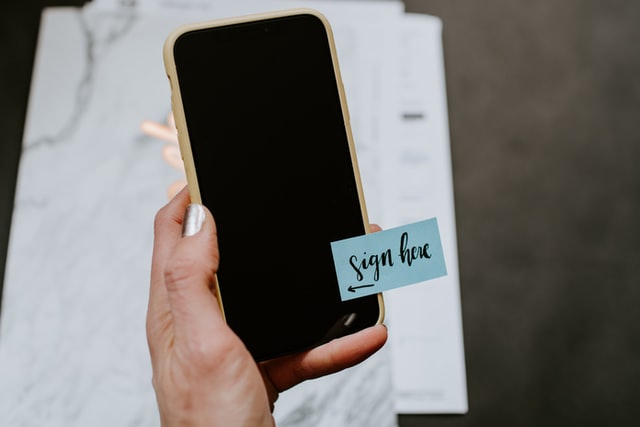It’s tax season soon. The IRS might not be always well-loved but it can’t be considered entirely backwards. It began to develop its procedures for e-signatures back in 1998. 1998! That means every single student in K‑12 schools today could have been born after you started to file your taxes electronically. And you’re still shuffling papers back and forth at the office? From school, back to school? Gluttons for punishment we say, because we know there is a much easier route. I mean, we could even tell you that the idea of e-signatures goes back about 160 years! It is far too late in the game for piles of paper and the processing, snags and delays endemic to its use — our STEM word of the day, meaning part of paper’s characteristic. There are also the physical issues, storage and the like. If you haven’t moved to e-signatures yet, it is too late. But cheer up, there’s still time.
What are e-signatures?
E-signatures are a digital or electronic means of expressing approval or signing or consent on electronic forms or documents. Think of it this way, an e-signature stands exactly in the place of a handwritten signature but you don’t need a pen, you don’t need the document in paper in your hands, and you don’t have to travel to the document physically. Nor does the document have to travel to you. It arrives digitally at the speed of the internet. No post office, registered mail, or noisy fax machine.
If you’ve seen this before it was likely on documentation like PDFs but really almost any computer filetype, even images, can have an e-signature association. E-signatures have carried the same legal weight as the old paper-based ones since the Electronic Signatures in Global and National Commerce Act (ESIGN) of 2000. This federal initiative recognized the potential for e-signatures and ensured that their use going forward could be common and standardized.
How can e-signatures help schools?
Ask your staff how much time they spend on paperwork. Actually, maybe don’t — just assume it’s too much and you’re good. We know that schools run on paperwork. You know that schools run on paperwork. It’s no secret or accident. There are, of course, records, attendance, applications, enrollment, inventories, directives, requests, and so on and so on. Almost all of these require some level of signature, even if just to acknowledge receipt. Many even have to go beyond schools and district offices, involving parents, municipalities, vendors, etc. If any paperwork goes in the hands of children, or some child-like adults (thinking of the airline oxygen mask spiels) it can easily disappear. Just one of the many problems endemic — now you’ll remember — to physical paper. The problems and bottlenecks of process physical paper are costly and wasteful in both the financial and time sense.
Plenty of schools had a leg up for distance learning during the pandemic because they were already using e-signatures for devices, consent, and other necessities for quick changes. In 2021 E-signatures are simply mandatory, in our view. They make consent possible from anywhere and on demand. The handling of paperwork is infinitely streamlined and the time frame is dramatically condensed. It always leaves no potential for disappearance because documents are trackable and easily reproduced.
Are e-signatures secure?
Your IT department can definitely break it down further but here are our two options for any non-IT people. Option one, have faith in the designs of the e-signature technology and regulations. Option two, accept it like many things these days as magic. Really, the short answer is yes, it is.
When someone double-clicks “sign” on a digital document there is a lot going on behind the screen to keep the signature and document safe secure. There are measures to verify identity, prevent tampering, and define the recipients. In many ways e-signatures can be even more secure and safe than a handwritten signature on a physical document.
There is a lot of faith and trust that has to be there with physical paper once it leaves one’s sight. E-signatures, on the other hand, can be encrypted and have passwords that add new layers of protection. They can also be stored securely in the cloud. Won’t get wet, burn, tear, or fade. Even if it’s not familiar yet, it’s way more secure than your filing cabinets.
How can schools start using e-signatures?
Your experience with distance learning and remote work over the course of the pandemic might have tested the limits of your school district’s hardware (and your patience) but it’s very, very likely you already have everything you need to go paperless and start using e-signatures. As long as computers or devices are connected to the internet they can easily access software designed to handle e-signatures. And this is the right way to go paperless.
That’s where we come in. LINQ Forms & Workflows is ready to go without any adaptation or experimentation, and it’s already secure for the standards of schools and districts. It’s an especially easy transition because our digital form builder allows schools to begin with forms they’ve been using all along.
Have any questions or want to learn more about e-signatures? Reach out to us. We can talk it over or schedule a demo. Stop wasting time, space and cut paper costs today.
